For pasta lovers, nothing tops a great bowl of delicious noodles with a decadent sauce. But knowing what types of noodles to use in different dishes can make or break your meal.
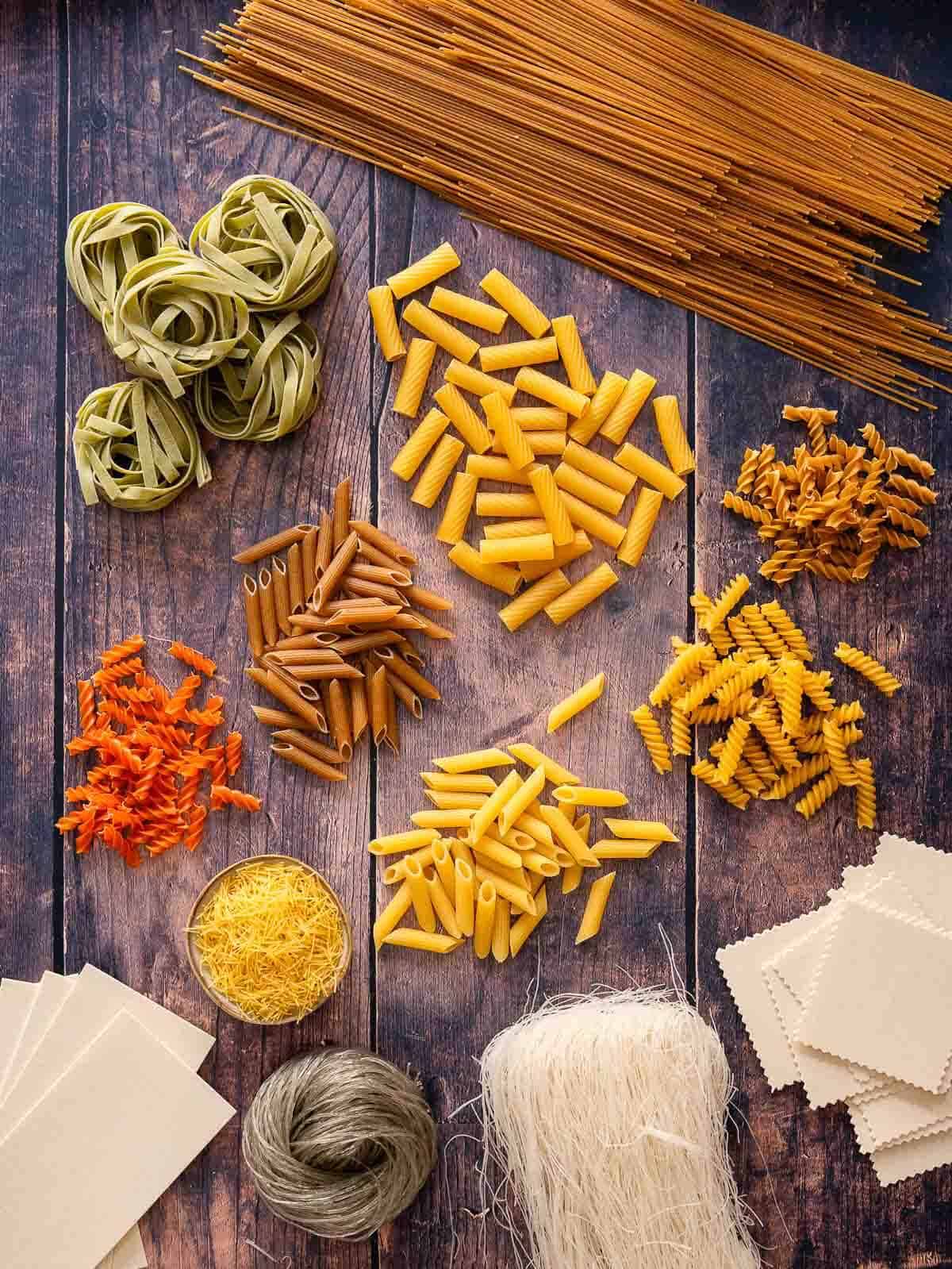
The shape of noodles complements the sauce or soup you add to or put them in. While the flavor of pasta is often the same no matter the shape, the shape of your noodles can change the texture and experience of your final dish.
Let's face it: the experience of your finished dish is what matters most. Most people have a favorite they serve the same way every time – family favorites passed down from generation to generation.
Jump to:
Different Types of Pasta Noodles
Noodles can be used to create a wide range of dishes, often based on different cultures. From Asian noodle dishes to Italian pasta dishes, the noodles we use are those we love.
"There's something truly special about spaghetti - it's not just a noodle, it's a tradition," says Bella Bucchiotti at xoxoBella.
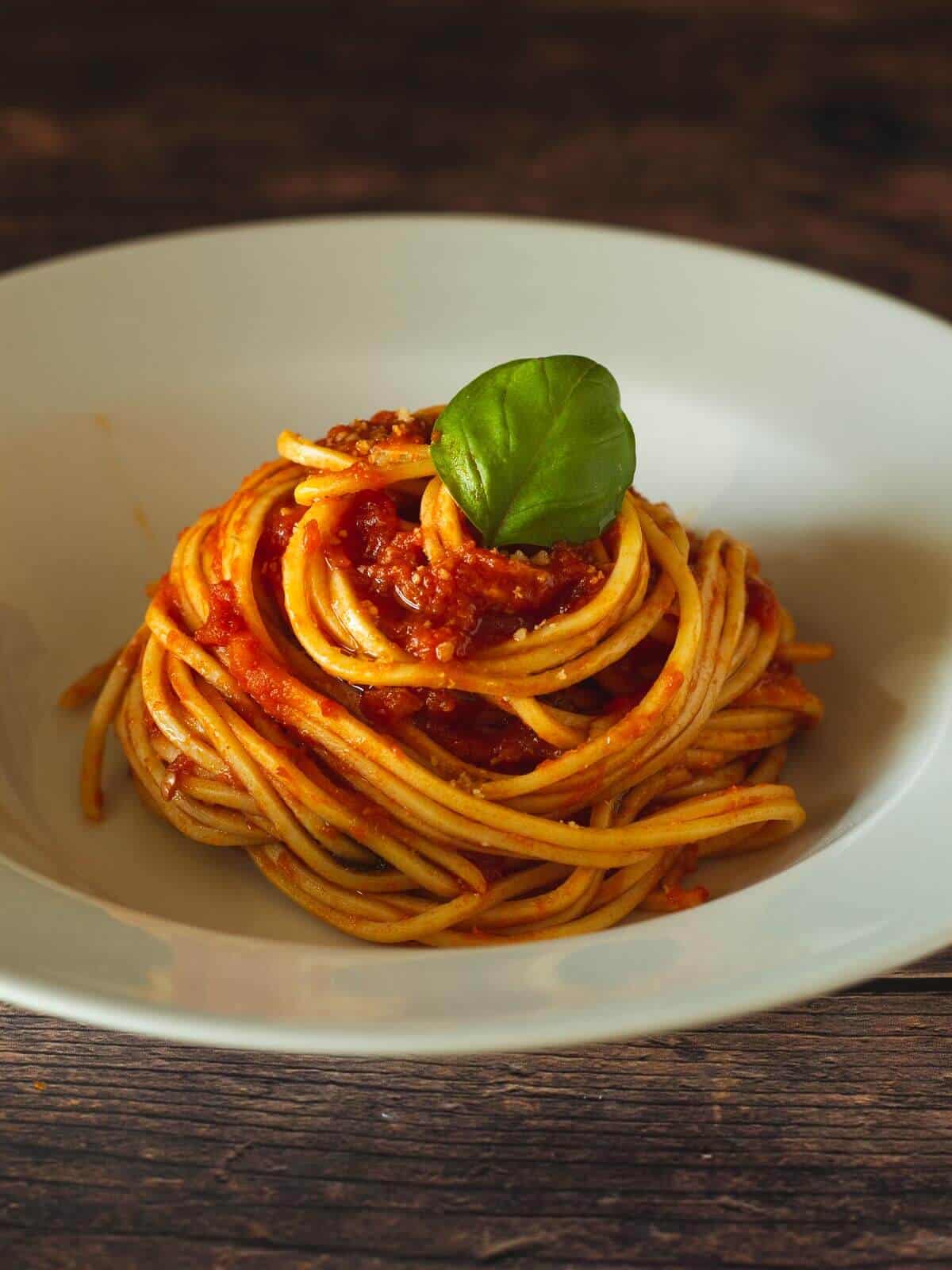
"As an Italian and a food blogger, the comforting embrace of a steaming bowl of al dente spaghetti brings back memories of family gatherings and cherished recipes passed down through generations. Its timeless simplicity and endless culinary possibilities make spaghetti more than just a favorite noodle - it's a symbol of love, connection, and the joy of sharing a meal with loved ones."
Asian Types of Noodles
Most of us have at least seen or heard of different types of Asian pasta noodles at some point in our lives. What are some options you can try?
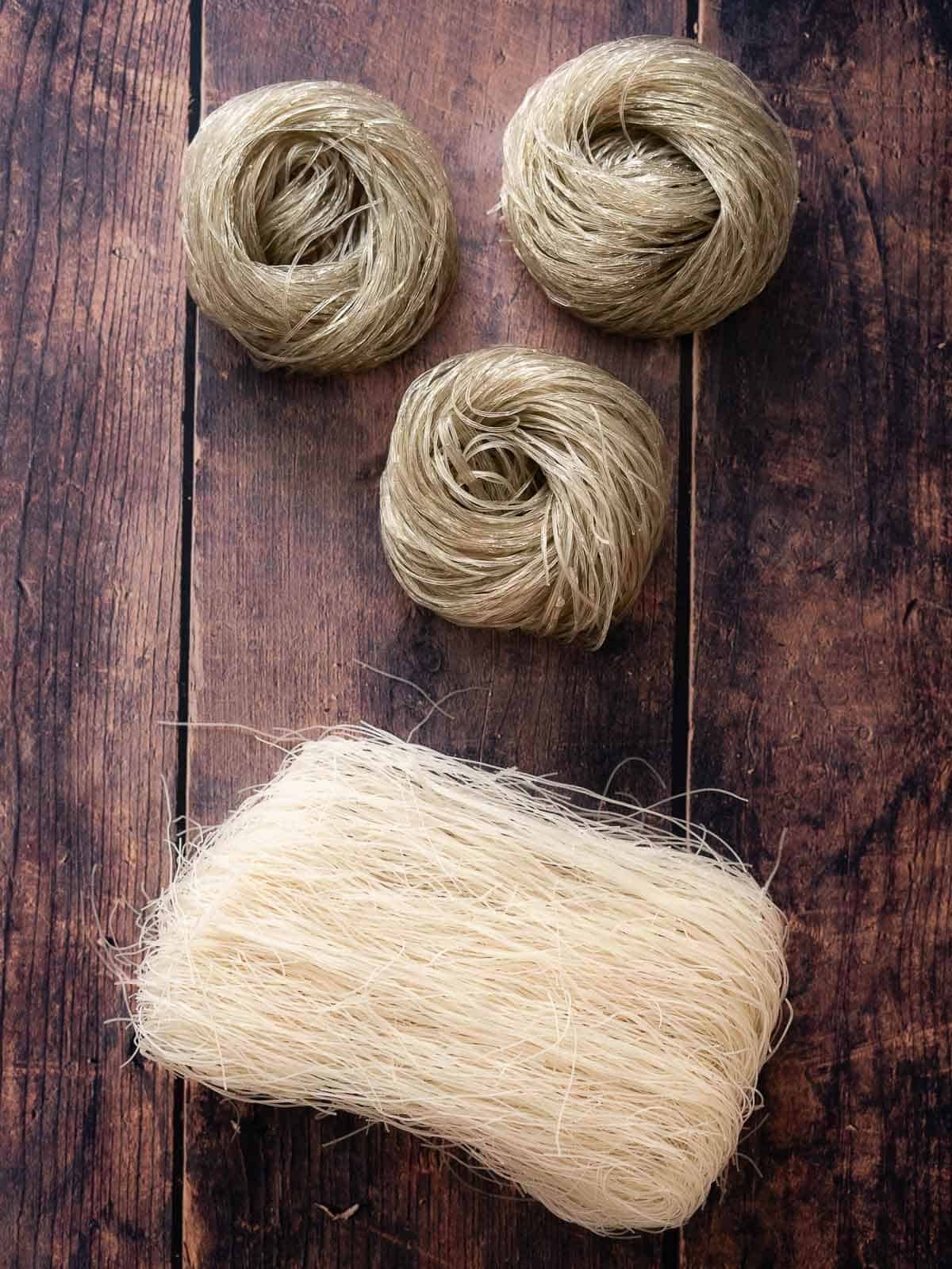
Chinese noodles include lo mein, chow mein, la mian, Beijing noodles, and Sichuan dan dan noodles,
Japanese noodles include ramen noodles, udon noodles, and soba noodles.
Korean noodles include glass noodles (japchae), cold buckwheat noodles (Naengmyeon), sweet potato noodles, and even Korean rice cakes (tteokbokki).
Italian Types of Noodles
Crossing the globe, we find Italian noodles. Thanks to the Italian world of pasta, we have:
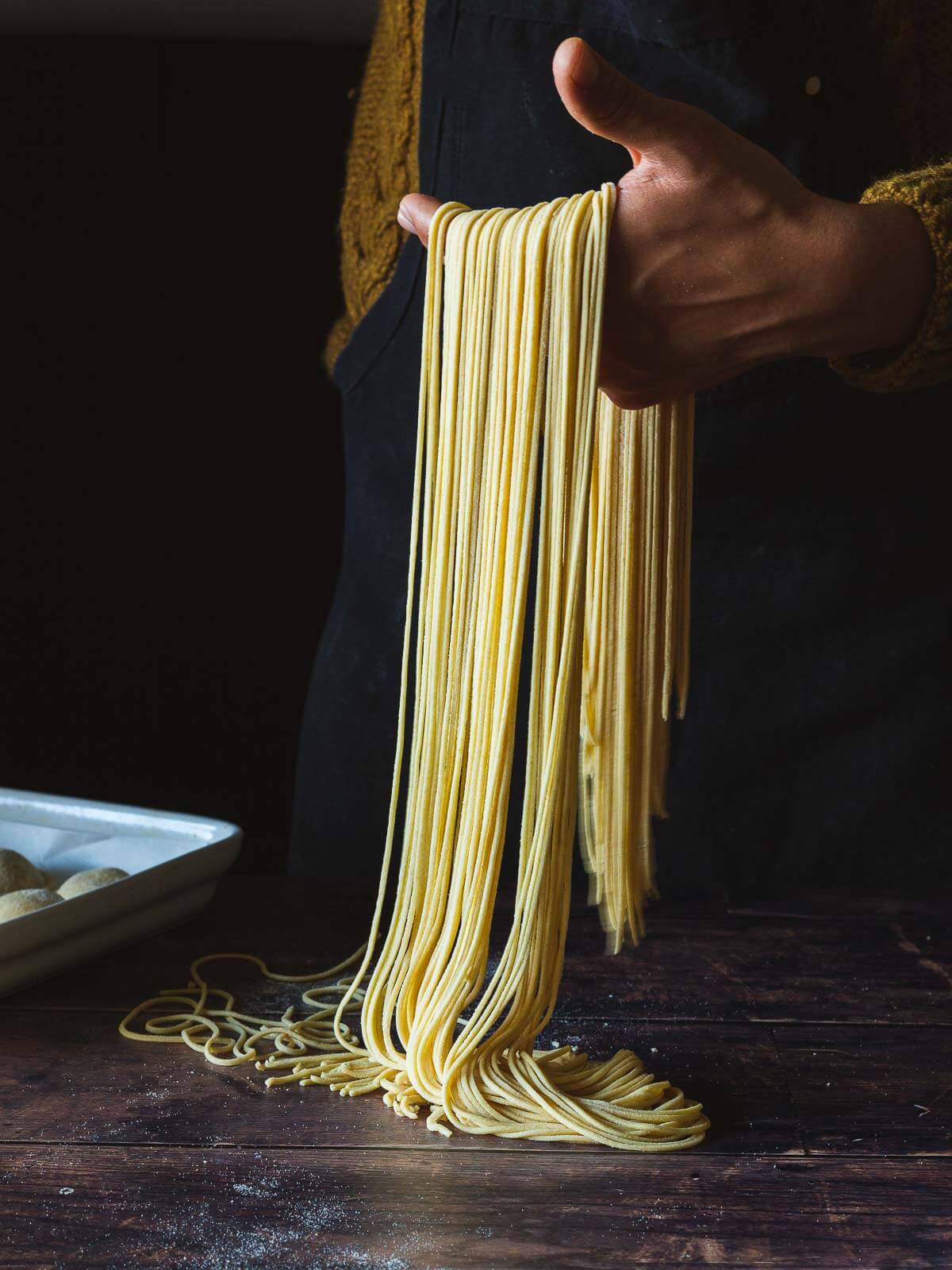
- Long pasta, a popular type of noodle that includes spaghetti, linguini, and fettuccine
- Short pasta, offering shapes like penne, farfalle, and rigatoni
- Stuffed pasta, another important category, with noodles such as ravioli, tortellini, and cannelloni
Learn how to make Fresh Vegan Pasta Noodles without eggs.
Noodles From Around The World
Moving around the globe again, we have pad thai (Thai noodles), Laksa (Malaysian and Singaporean noodles), pho (Vietnamese rice noodles), Fideos (Spanish noodles), Keskesu (Turkish noodles), Spaetzle (German noodles), Ash reshteh (Iranian noodles, and African noodles such as couscous, fufu, and msheri.
Alternative Types of Noodles
There is also a whole world of alternative noodles, such as gluten-free, vegan, vegetable, whole-grain, Kelp noodles, tofu noodles, and quinoa pasta, to name a few.
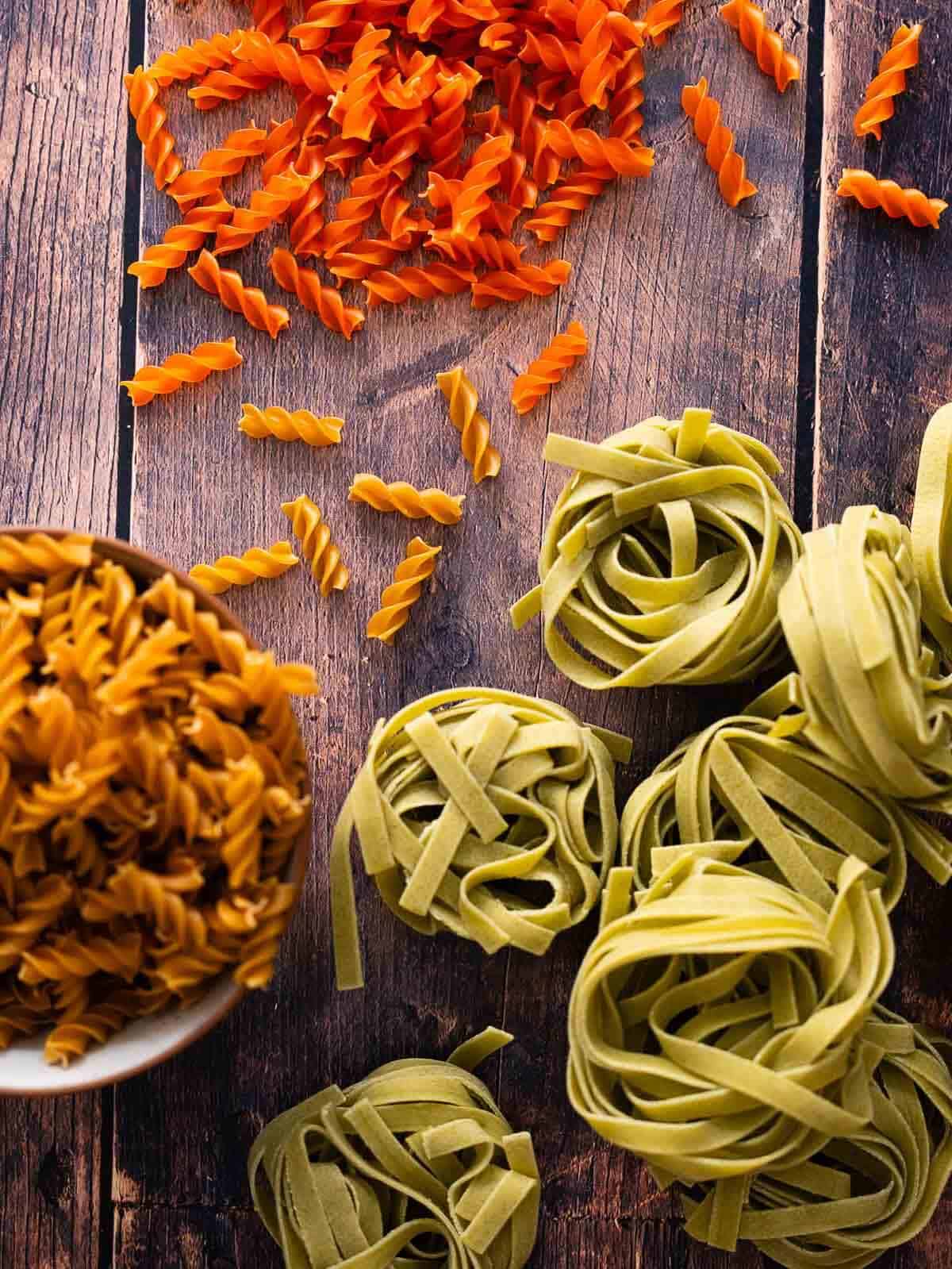
What Types of Noodles Should You Use?
While most noodles are interchangeable from a flavor standpoint, it's good to know what type to use with different recipes.
Long and Thin Pasta (Spaghetti, Linguine, Fettuccine)
This type of noodle is best for light sauces that will cling to your noodles, like those with olive oil, tomato, or a simple herb or garlic sauce. Spaghetti is a perfect example of this. A good marinara or spaghetti pasta is a classic combination.
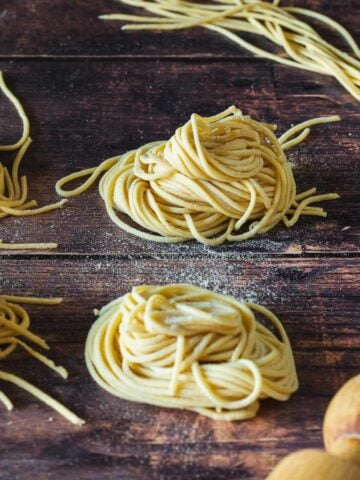
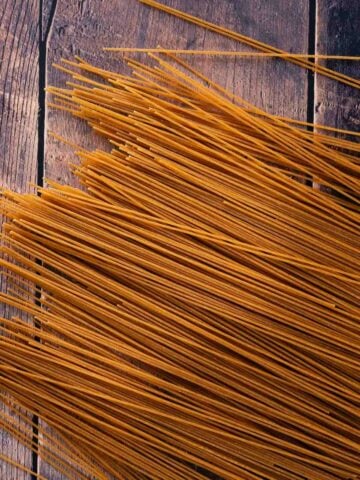
These noodles are generally great paired with seafood, vegetables, thinly sliced meats, or simply make a delicious lemon garlic pasta.
Tubular Pasta (Penne, Rigatoni, Ziti, Tortiglioni)
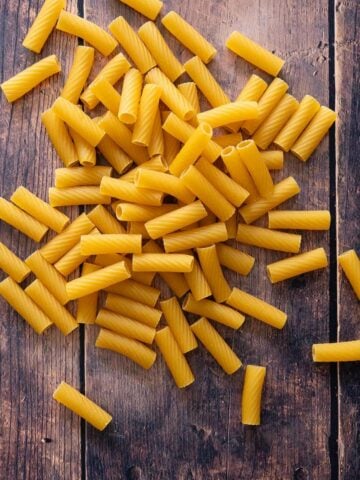
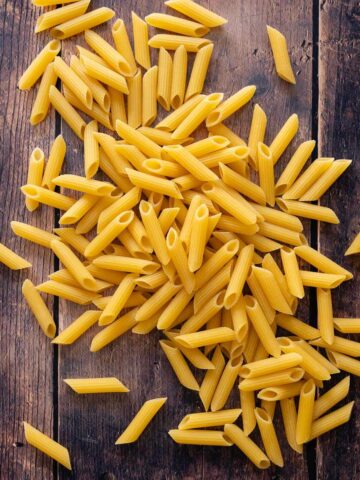
This pasta works well with heartier sauces and chopped vegetables filling the pasta tubes, such as puttanesca with black olives, pasta with asparagus, thicker marinara, mushroom stroganoff, and meat-based and cream-based sauces.
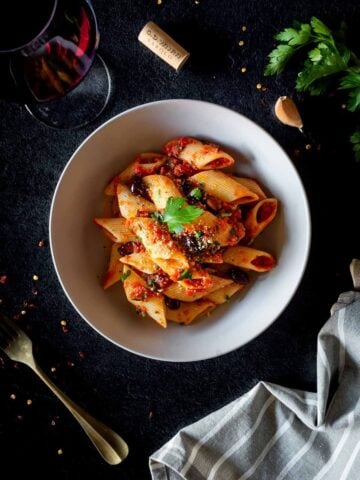
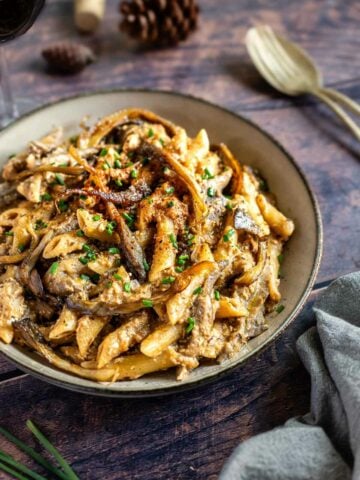
They work great in baked pasta dishes like Italian ziti or pasta alla vodka.
Ribbon Pasta (Fettuccine, Pappardelle)
Ribbon pasta is a good choice for rich and creamy sauces. Sauces that will cling well to the noodles include Alfredo sauce, carbonara, or mushroom cream sauce.
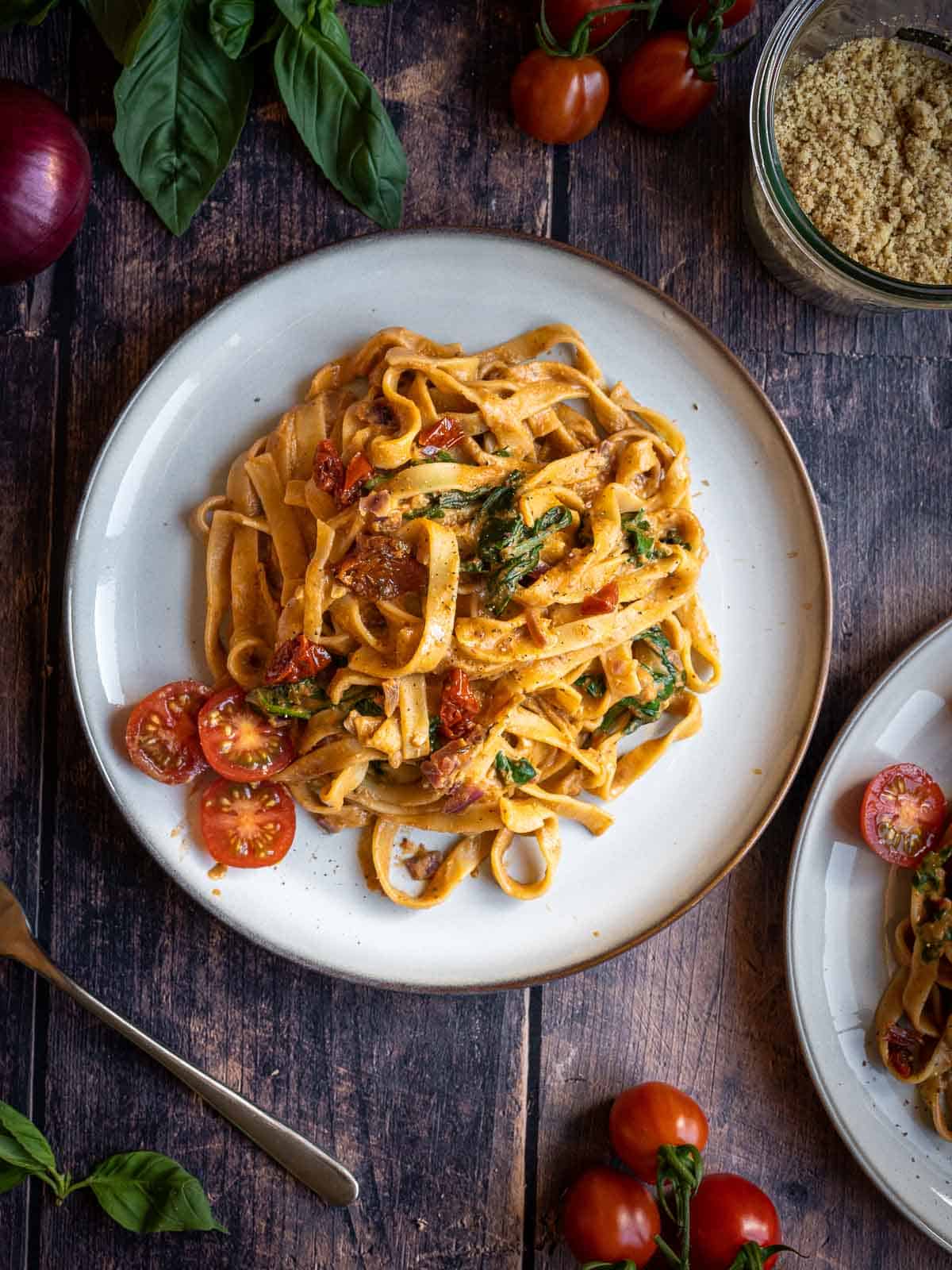
The wider surface area of ribbon pasta is ideal for being coated by the thicker and sometimes fattier sauces.
Shaped Pasta (Farfalle, Fusilli, Rotini)
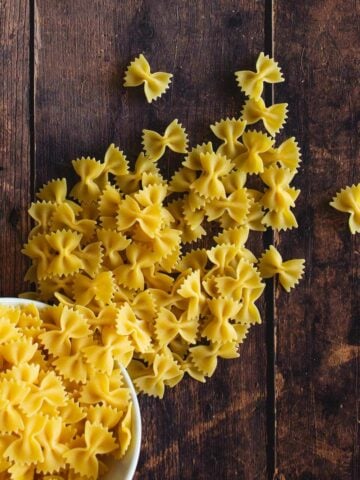
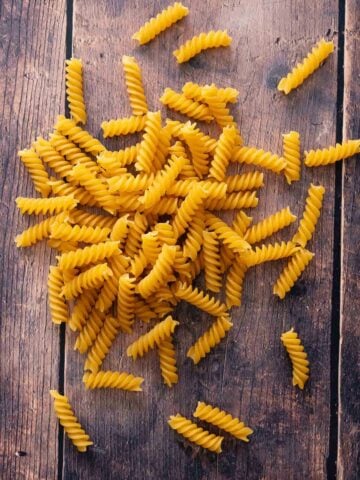
These noodles are great for chunky sauces with a thinner, brothier consistency. A thinner marinara sauce with chunky vegetables or bigger bits of meat would be a good sauce for this type of pasta. Thanks to the nooks and crannies of these shapes, grated cheese often goes well with them, too. They hold onto sauces well.
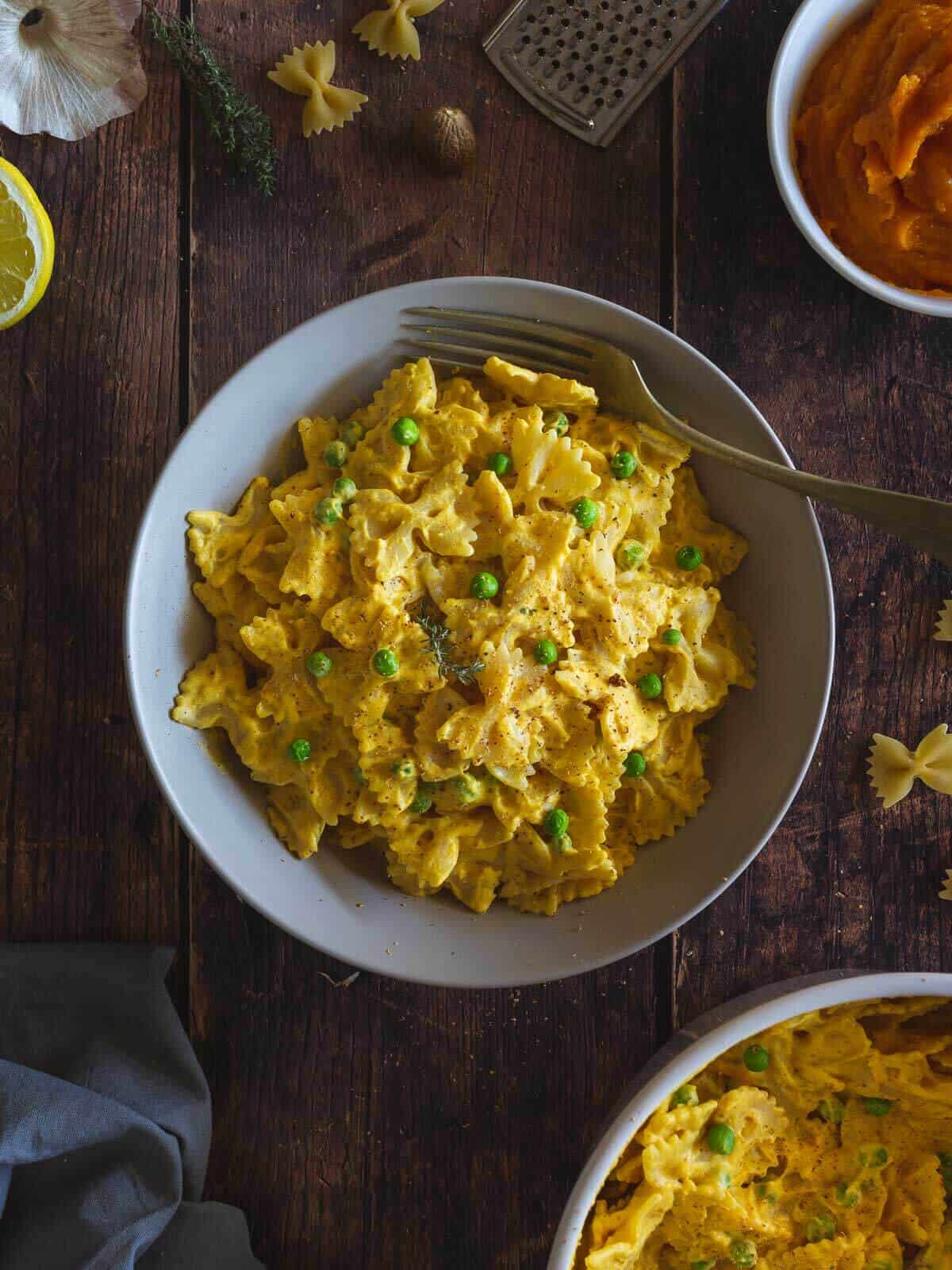
We use farfalle to pair our roasted butternut squash pasta sauce and fusilli for our Italian peas and pasta recipe; they go wonderfully.
Stuffed Pasta (Ravioli, Tortellini, Cannelloni)
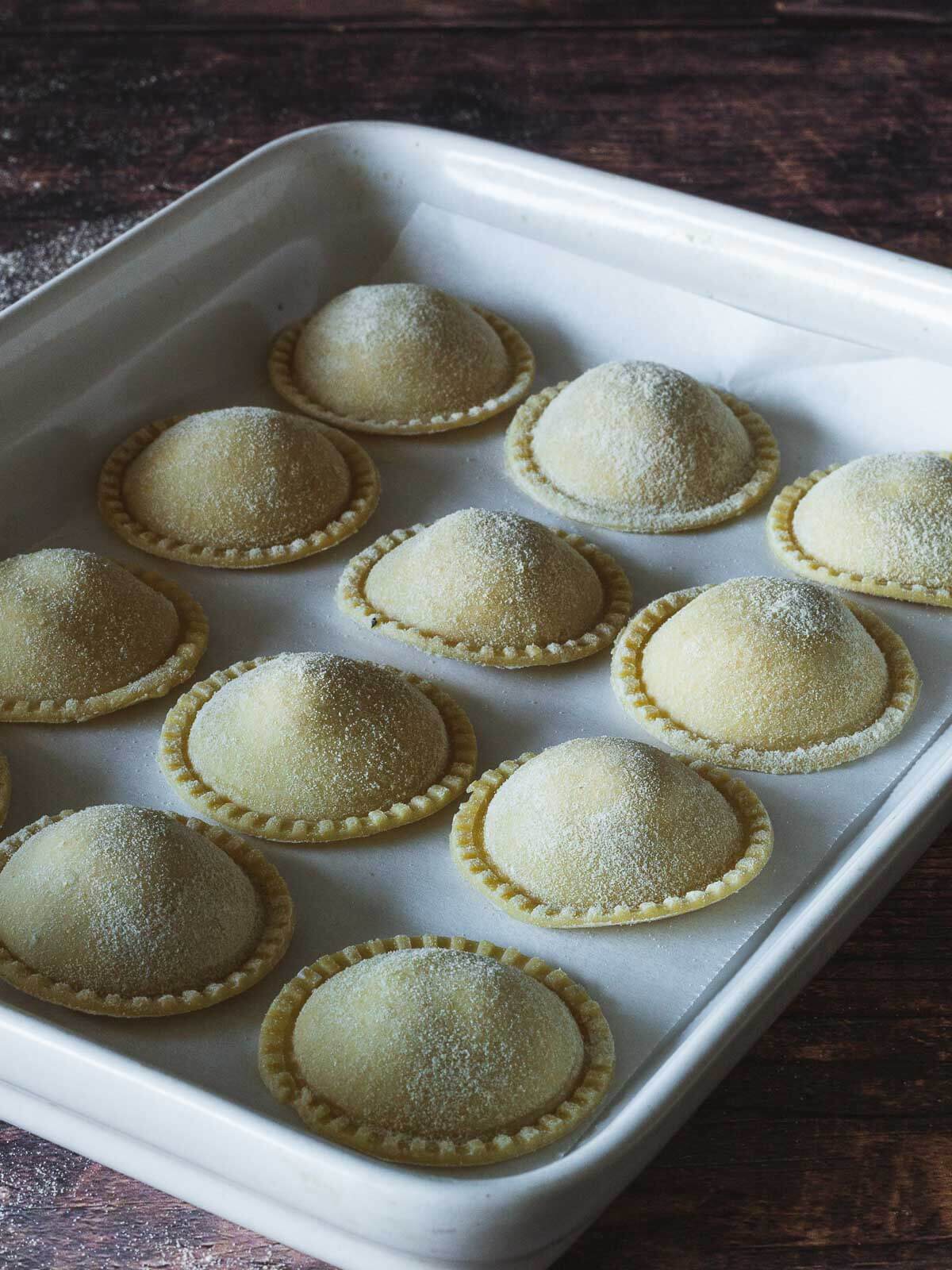
Stuffed pasta usually does well with lighter sauces to balance out the heavier texture of the noodles. Butter sauce, sage sauce, or a light tomato sauce will do well with any stuffed pasta. Ravioli is a perfect example of a stuffed pasta that goes well with a light tomato sauce or sage butter like this vegan butternut squash ravioli.
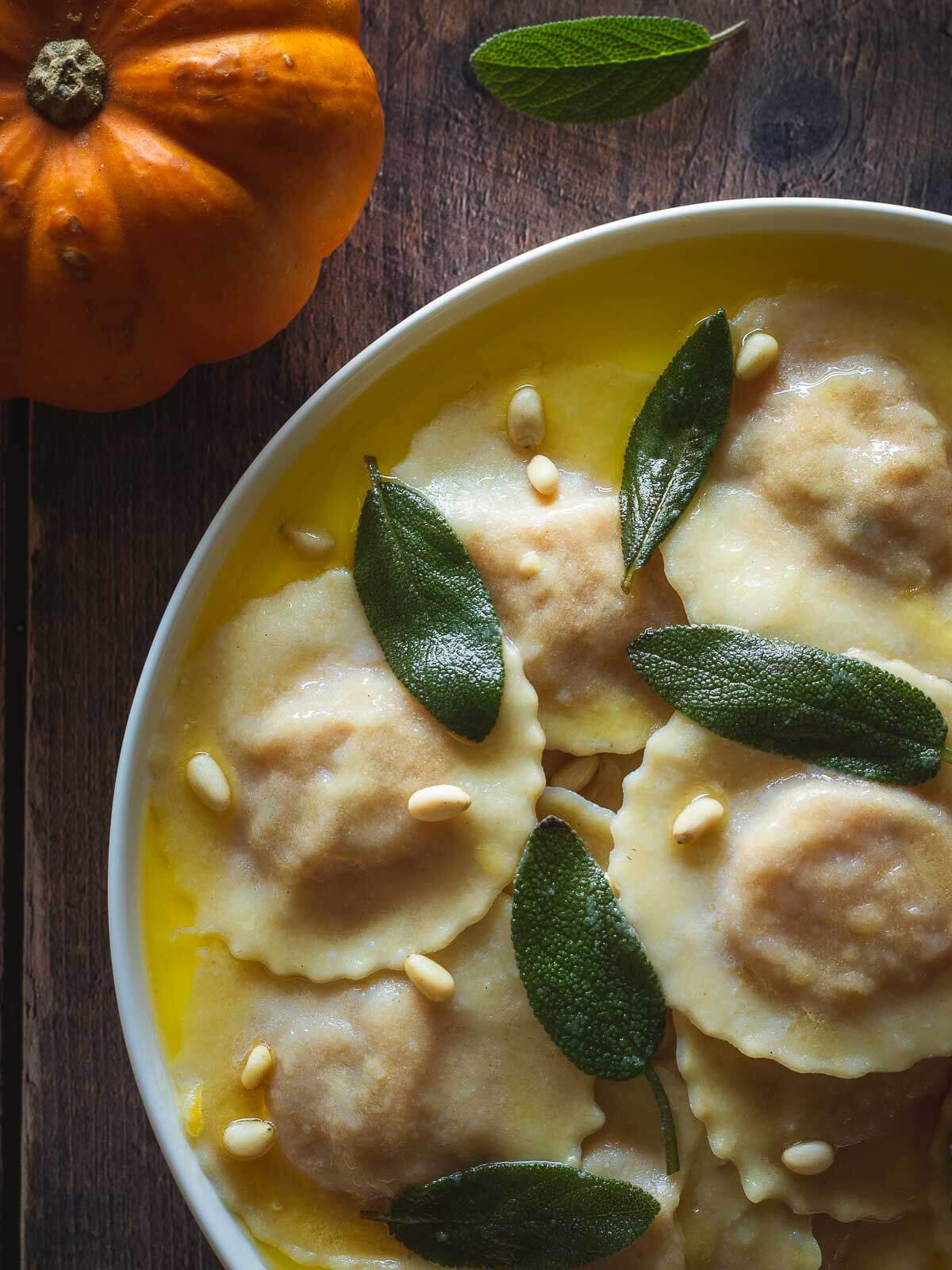
To serve stuffed pasta with a heavier sauce, try a pesto or cream-based sauce for the best results.
Asian Noodles (Rice noodles, Udon, Soba)
These noodles have extensive uses but are often best paired with sauces with an Asian soy-based sauce. Peanut sauce or broth made with miso or dashi are also excellent choices.

This mushroom miso soup is a good example of how to put rice noodles to good use in a simple and delicious dish,
Soup Pasta (Orzo, Ditalini, Stelline)
Pasta in small shapes and sizes is a beautiful way to add texture to dishes such as soup. It adds texture and heartiness without taking over the whole dish.
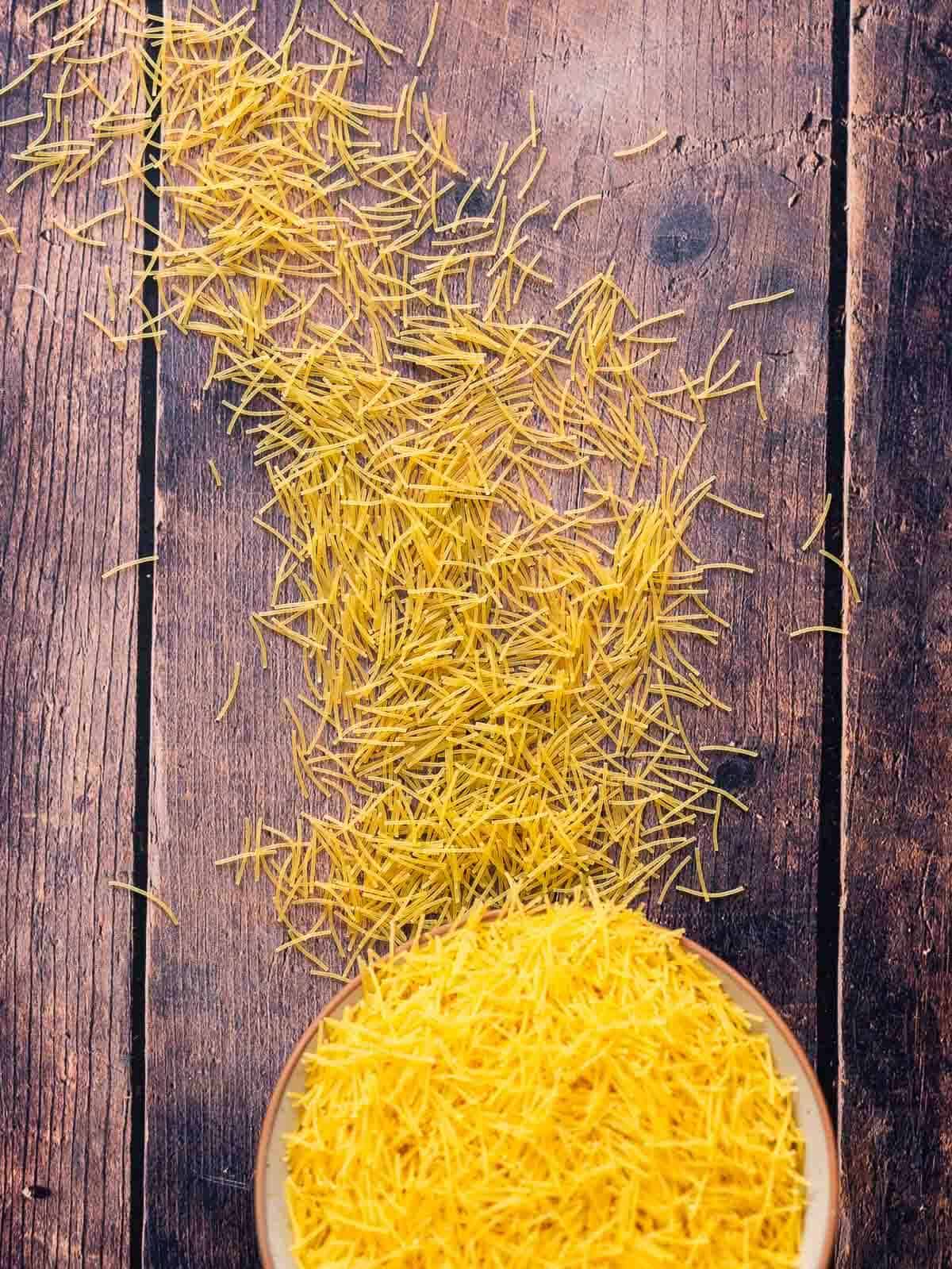
In general, the smaller the noodles, the thinner your broth should be. The reverse is also true: the thicker your broth, the larger your noodles should be.
Tips for Using Alternative Types of Noodles
There is a general rule of thumb for cooking noodles.
If you are using regular pasta, it won't require much, if any, stirring and also requires no rinsing. Simply drain and add to your dish.
If you use alternative pasta, such as gluten-free pasta, you must stir more to keep the noodles from sticking together. Rinsing the noodles after draining is essential to remove the excess starch. Skipping this step will leave the noodles in a sticky mass instead of individual noodles.
Types of alternative pasta are:
- Bean-based pasta, such as chickpea pasta
- Alternative flour pasta, such as quinoa pasta or brown rice pasta
- Red lentil pasta
- Kelp noodles
- Brown rice pasta
- Buckwheat pasta (soba noodles)
- Konjac/Shirataki Noodles
- Tofu/Shirataki Noodles
- Vegetable pasta, such as zucchini noodles (aka Zoodles)
- Spelt or whole-wheat pasta
- Egg noodles
Cooking Times for Different Types of Noodles and Methods of Cooking
Depending on your noodle dish, different cooking methods require different cooking times. That said, you should always follow the timing listed on your noodles' package.
As a general rule of thumb, you can refer to these cooking times and methods, but remember that the noodles are finished cooking when they are cooked to your liking.
Boiling Different Types of Noodles
Long and Thin Pasta: Boil for 8-10 minutes. (Unless it's very thin, like angel hair pasta, in which case, boil for 3-4 minutes.)
Tubular Pasta: Boil for 9-12 minutes, depending on the pasta you cook.
Ribbon Pasta: Boil for 9-12 minutes.
Shaped Pasta: For Boil for 8-11 minutes.
Stuffed Pasta: For fresh pasta, boil for 3-4 minutes. For dried pasta, boil for 4-8 minutes, depending on the type of stuffed pasta you are cooking.
Asian Noodles: These vary quite a bit. Follow the directions on the package.
Pan-frying or Stir-frying Pasta
Asian Noodles: Cook for 3-5 minutes.
Steaming Pasta
Asian Noodles: Cook for 3-5 minutes.
Baking Pasta
Stuffed Pasta: Bake for 20-30 minutes.
Regular Pasta: Bake for 30-35 minutes
Instant Noodles
Pre-packaged Instant Noodles: Let sit in hot or simmering water for 3-5 minutes, depending on the noodles used.
Which Pasta Is Always the Right Choice?
The right pasta to use is always the pasta you want to eat. While there are general rules for different types of noodles, you can mix and match them any way you choose with whatever sauce or broth you want to enjoy them with.
"While we have a variety of noodles in our house, I always have boxes of angel hair in my cupboard for the kids," says Monica Fish, Founder of Planner at Heart. "For those days when the kids are super hungry and can't wait, I can get a meal on the table in under five minutes. If I'm short on time, I boil the water in my tea kettle and then pour it into the pot for an even faster prep."
Conventional culinary traditions are great for enjoying traditional dishes. But when you make pasta at home, you can do with those noodles as you please. The only thing that matters is that you enjoy what you cook.
This article originally appeared on Pink When.
Maike Corbett
Maike Corbett is an American food blogger and founder of Cheerful Cook, a popular website featuring comfort food recipes from the US and Germany. She has been featured in numerous media outlets, including the AP Wire and MSN.

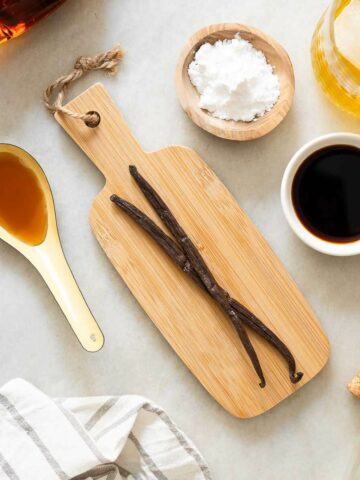
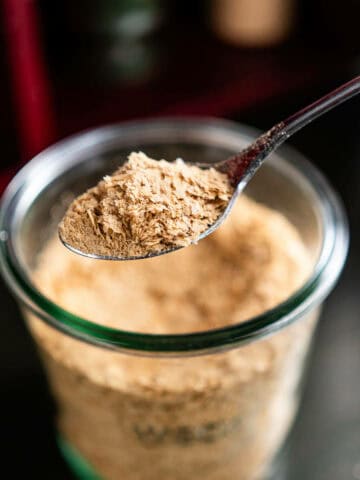
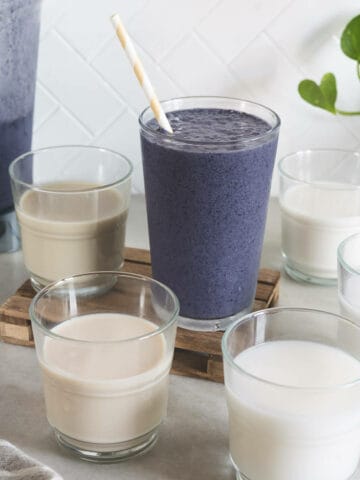
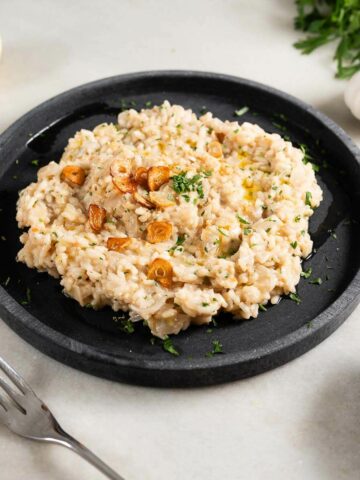
Comments
No Comments